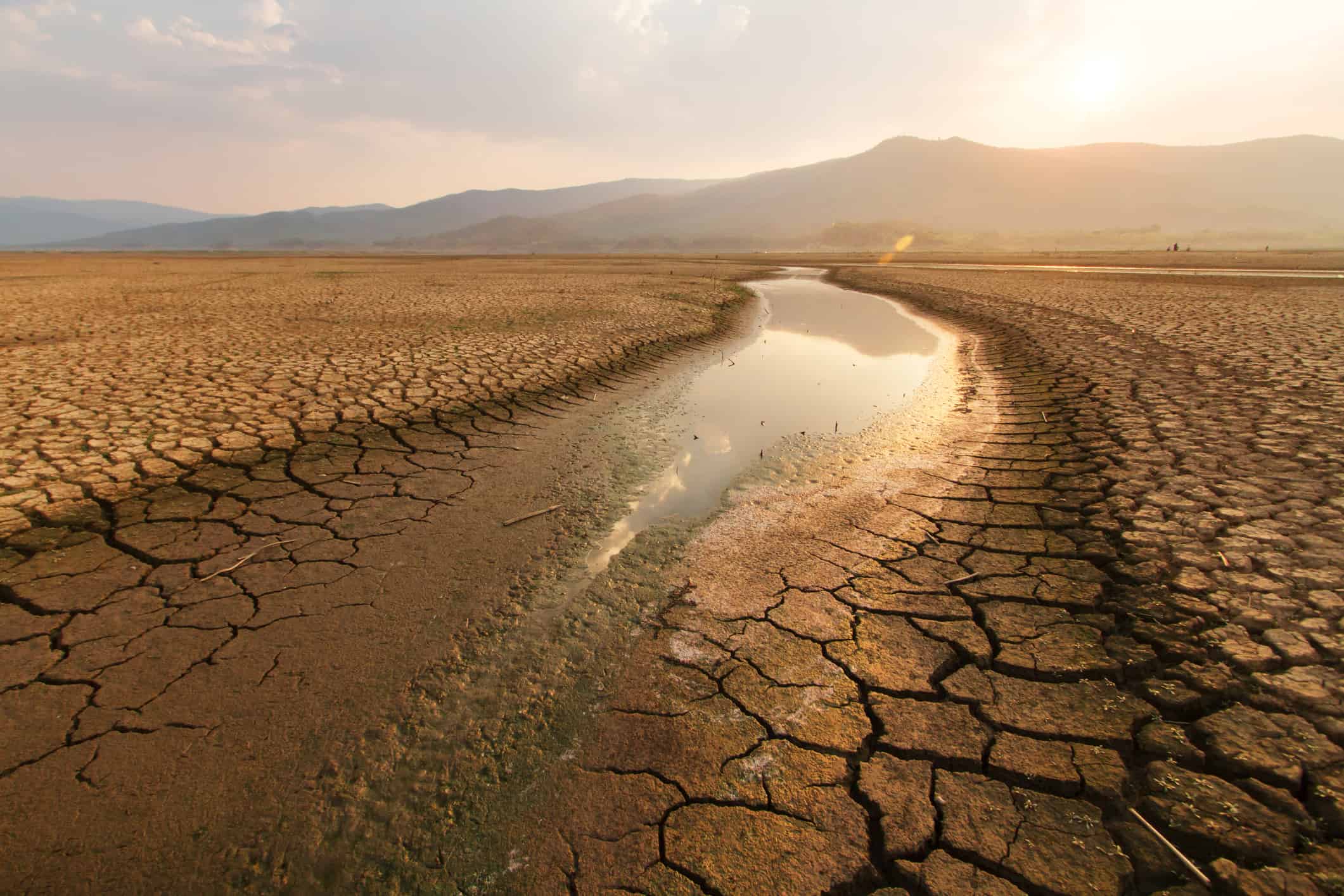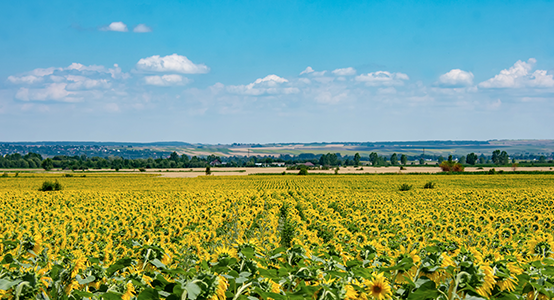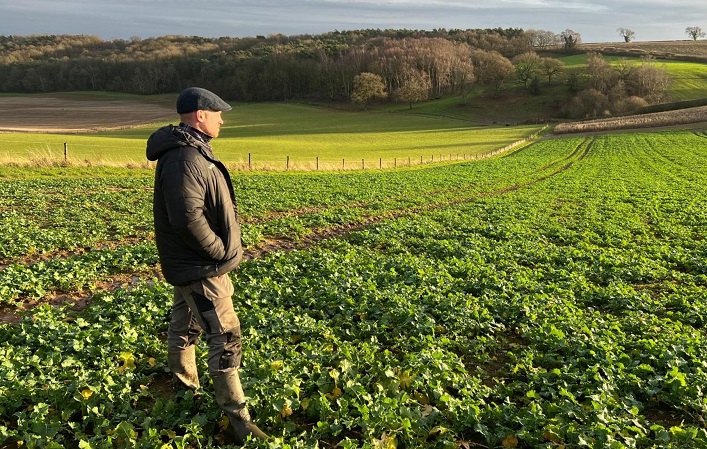In the fall, rice fields in the Sacramento Valley usually shine golden brown as they await harvesting. This year, however, many fields were left covered with bare dirt.
“It’s a disaster,” said rice farmer Don Bransford. “This has never happened. Never. And I’ve been farming since 1980.”
Bransford typically farms about 1,800 acres of rice. But the drought was so severe this year that water deliveries to area farms were drastically cut. Bransford, board president of the Glenn-Colusa Irrigation District, didn’t plant a single acre. Many other farms went idle as well.
California has just gone through the state’s driest three-year period on record, and this year the drought has pushed the fallowing of farmland to a new high.
In a new report on the drought’s economic effects, researchers estimated that California’s irrigated farmland shrank by 752,000 acres, or nearly 10%, in 2022 compared with 2019 — the year prior to the drought. That was up from an estimated 563,000 acres of fallowed farmland last year.
Nearly all the farmland that was left unplanted and dry falls within the Central Valley, and a large portion of it in the valley’s northern half. The state’s main rice-growing regions in Sutter, Colusa and Glenn counties were hit particularly hard, the report said, with about 267,000 acres fallowed this year.
“The severity of the ongoing drought has been unprecedented for the Sacramento Valley,” said Josué Medellín-Azuara, a water resources economist and associate professor of civil and environmental engineering at UC Merced. “It’s been more severe over the past year, and you have the cumulative effects of the previous dry years.”
Medellín-Azuara and colleagues from UC Merced, UC Davis and the Public Policy Institute of California prepared the report for the California Department of Food and Agriculture. They estimated changes in the acreage of irrigated land by surveying irrigation districts, analyzing water data and reviewing satellite data.
They found that water deliveries in the Central Valley were cut by nearly 43% in both 2021 and 2022. Growers partially made up for those reductions by pumping more groundwater.
Gross crop revenues fell $1.7 billion, or 4.6%, this year. Revenues of the state’s food processing and manufacturing industries declined nearly $3.5 billion, or 7.8%.
An estimated 12,000 agricultural jobs were lost, representing a 2.8% decline.
“Those farmworkers suffer the most during the droughts,” Medellín-Azuara said.
The researchers said California lacks sufficient programs to assist laborers who lose farm jobs. They said it’s crucial “to identify and assist communities that rely on seasonal and permanent agricultural jobs that are vulnerable to drought.”
The amount of farmland left dry this year surpassed the peak of fallowed land during California’s last drought from 2012 to 2016.
Medellín-Azuara said the situation could have been worse this year if reservoirs that supply the San Joaquin Valley hadn’t risen somewhat with rains in late 2021, making more water deliveries possible.
Still, the losses for agriculture were severe.
“It’s a really remarkable hit,” said Daniel Sumner, a professor of agricultural economics at UC Davis. He said the effects on the farm economy in the Sacramento Valley, which typically has more water and fares better than the San Joaquin Valley, were especially pronounced, representing the biggest contraction he has seen in the region in decades.
High milk prices helped mitigate the overall decline in farm revenues, Sumner said. And farmers made various adjustments to cope with reduced water supplies.
“We cut back on cotton. We cut back on some other crops. And the fruits and vegetables that we’re most known for, we continue to produce most of them,” Sumner said. “California agriculture is incredibly resilient.”
But pressure on agriculture is increasing as climate change unleashes more intense and longer-lasting droughts, as well as heat waves that can harm crop yields.
During the past two years, growers have dramatically increased groundwater pumping in the Central Valley, including many areas where water levels are declining and a growing number of household wells have gone dry. The researchers estimated that farms have pumped 27% more groundwater this year than in 2019.
Such heavy reliance on wells will face new limitations in the coming years. Local water agencies across the San Joaquin Valley are required to begin reining in overpumping under California’s Sustainable Groundwater Management Act, which requires them to balance water use with available supplies by 2040. Researchers have projected that meeting the law’s sustainability rules will require that vast areas of farmland be taken out of production permanently.
For now, farmers with wells have been able to rely on aquifers. But in areas where rice farms have long depended solely on flows from the Sacramento River, many growers have no wells. Without water flowing in canals, farmers were left without options.
California harvested the state’s smallest rice crop since the severe drought of 1977-78, according to the U.S. Department of Agriculture.
“We typically plant about 100,000 acres of rice in our district. And this year, we planted 1,000 acres,” said Thad Bettner, general manager of the Glenn-Colusa Irrigation District. “It’s just a massive, massive impact.”
With the Sacramento River watershed parched and Shasta Lake at low levels, wildlife officials dedicated some water to try to help the spawning of endangered winter-run Chinook salmon, which contributed to the cuts in water deliveries to farms, Bettner said.
“Unfortunately, those protections for winter-run didn’t help the fish,” Bettner said. “We’re seeing, basically, very few of them survive.”
Now many rice farmers are feeling uneasy about what might happen if the drought persists next year, Bettner said. “We’re very concerned about how many small family farms that we have in our district continue to stay in business.”
Bransford said he has crop insurance and can receive compensation for the rice he couldn’t plant. He has kept a couple of employees on his payroll. But much of the area’s farming economy has shriveled, leaving many laborers suffering.
“It’s devastating,” Bransford said. “The greatest impacts are to the farmworkers.”
“They’re an embedded, important part of our community,” he said. “And the problem we have as owners of farms is if these people leave, there’s no replacement.”
California farms primarily produce short- and medium-grain Japonica rice, which is used for sushi and other dishes. The rice is sold domestically and also exported to Asia and other parts of the world.
The area’s vast rice fields have long provided habitat for migrating birds, which over the last century have lost most of the natural wetlands where they once stopped to rest and feed.
Usually, after growers harvest their crops, the fields are left with chopped-up rice straw and fallen kernels. The farmers will again send water flowing to fields, attracting geese, ducks and other birds, which arrive in large flocks to feed.
With many fields now bone dry, Bransford and other farmers say they’re concerned about how the birds and other species will fare.
The California Rice Commission said this year’s rice crop is estimated to be about half the size of a typical harvest. The organization said the drastic water cuts have also dried up what were once reliable habitats for more than 200 wildlife species, among them migrating ducks and geese, which typically depend on rice fields for a large portion of their food during the fall and winter.
Tim Johnson, the commission’s president and CEO, said the lack of water now threatens millions of wetland-dependent birds, and could affect the migratory path along the Pacific Flyway. He said while the long-term environmental effects are unknown, rice farmers have been working with government agencies and conservation groups to provide as much habitat as possible and “assist in tracking the impacts this historic drought will have on waterbirds, with the goal of using that science to better help the Pacific Flyway in the years ahead.”
On the west side of the Sacramento Valley, waterbirds typically move between wildlife refuges and rice fields. Because the local wildlife refuges had their water deliveries cut this year, Bransford said, the irrigation district sold the government additional water to help nourish the habitats.
With fewer rice fields to turn to, the birds will likely be concentrated where there is water, Bransford said. And such concentrations of birds can lead to outbreaks of avian botulism or other deadly illnesses. A wave of avian flu has already left millions of birds dead in parts of North America, and has been circulating in California.
“Hopefully, it will not have an impact on the waterfowl. But there is potential for that,” Bransford said.
Because migrating birds are also encountering parched landscapes elsewhere, he said, “it’s really going to be difficult on them.”
While the dry fields show the drought’s immediate toll, farmers expect it could take a year to determine how severe the ecological ripple effects turn out to be.
Source - https://www.fltimes.com













